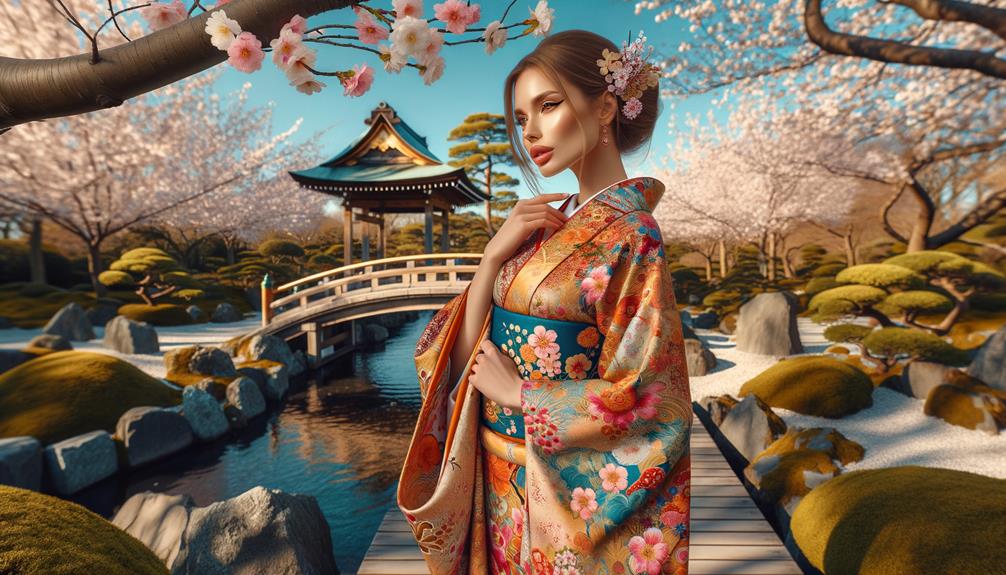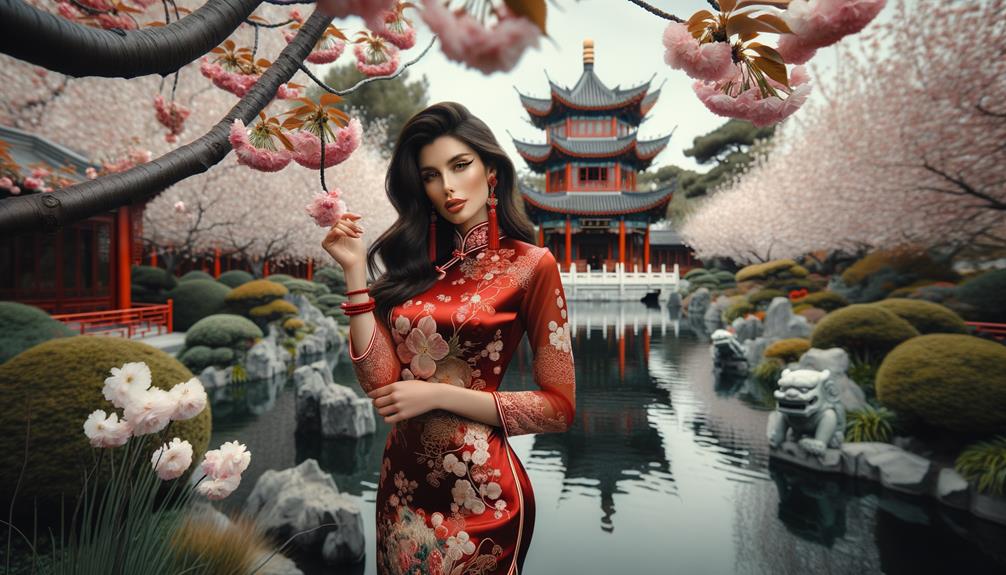When I think of timeless elegance, a beautifully draped sari instantly comes to mind. The art of draping transforms a simple fabric into a stunning garment, rich in cultural heritage. Styles like the Nivi drape or the Bengali drape each tell their unique stories, evoking a sense of history. Luxurious fabrics like silk and airy chiffons flow with each step, adding to the sari's innate charm. Adding statement earrings or a stylish waist belt gives it a modern twist, perfect for any grand celebration. As I drape the sari, I feel like I'm wearing a piece of history, waiting to unfold even more beauty and grace.
History of the Sari
The sari, a timeless piece of Indian attire, has a rich history that spans over 5,000 years. I find it fascinating how this strip of cloth, known as a 'sati' in Sanskrit, has become an integral part of Indian culture and tradition. Its enduring popularity is a testament to its versatility and elegance. When I think about the numerous Indian sari drapes, I'm struck by how each style reflects the essence of a region and its people.
From the regal Nivi drape of Andhra Pradesh to the playful Nauvari of Maharashtra, each style tells a unique story. I've always admired how the Bengali drape, with its pleated front and opulent pallu, exudes sophistication. These draping styles are deeply rooted in history and imbued with cultural significance, making the sari more than just a piece of clothing – it's a symbol of identity.
As I delve deeper, I realize that the sari's enduring appeal lies in its ability to adapt while remaining a symbol of grace. It's a heritage that continues to evolve, reflecting India's changing landscapes and traditions.
Types of Fabrics

Exploring the different types of fabrics used in saris, I'm always drawn to how each material brings its own unique charm and elegance to this traditional attire. Georgette, for instance, offers a flowy, lightweight feel that makes it a favorite for draped sarees. Its ability to create a graceful silhouette, especially when paired with a matching blouse, never fails to impress. The way georgette moves and falls effortlessly exudes a modern sophistication that's hard to match.
Chiffon, with its delicate texture, adds an airy quality to saris. When I drape a chiffon sari, I feel like I'm floating effortlessly. It enhances the overall look, making it perfect for those who seek a romantic, whimsical touch. Silk, in its many forms—pure silk, crepe silk, or satin silk—brings a sense of luxury and opulence. The richness of silk transforms any sari into a statement piece, perfect for special occasions.
These fabrics—georgette, chiffon, and silk—are ideal for pre-draped sarees, ensuring a smooth, elegant fall. The versatility in fabric choices allows for endless innovation, making each sari a unique masterpiece.
Draping Techniques
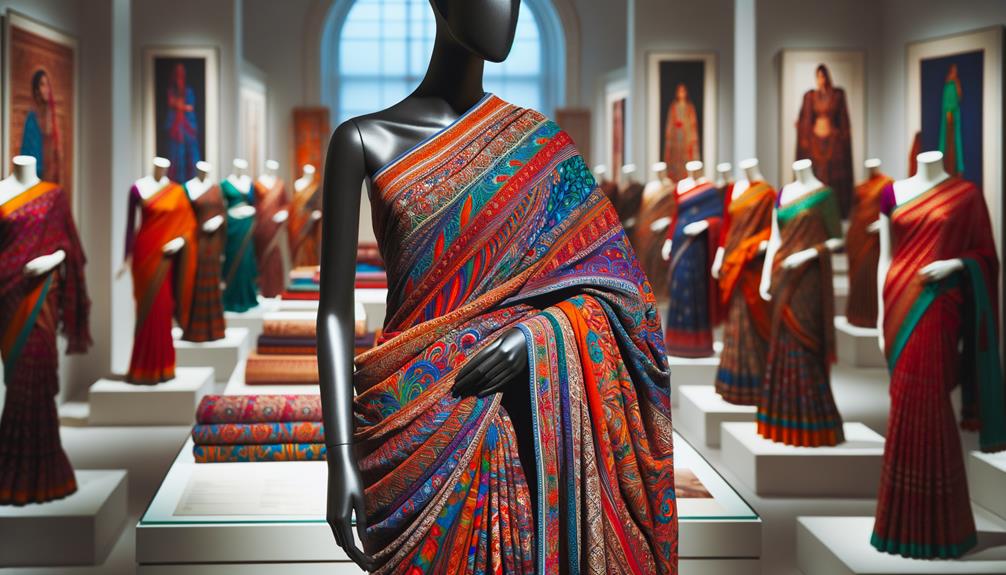
The art of draping an Indian saree is a true marvel. Each fold and pleat transforms the fabric into a masterpiece. The traditional Nivi style from Andhra Pradesh is a testament to timeless elegance, with carefully arranged pleats and an elegantly draped pallu.
I'm equally fascinated by the Bengali drape, where the pallu is thrown over the shoulder and often brought back to the front, creating a layered, textured look that exudes both regality and relaxation.
The vibrant Gujarati drape showcases intricate embroidered designs on the pallu, which often tell their own stories. The Maharashtrian style, with its unique dhoti-like tuck, balances practicality with elegance. Each region in India boasts its own distinct draping style, highlighting the cultural richness and diversity that make sarees so captivating.
The art of pinning and tucking is crucial, turning a simple fabric into a beautifully draped garment. Mastering these techniques requires precision and deliberation, with each fold a testament to centuries of tradition and innovation.
Styling Tips
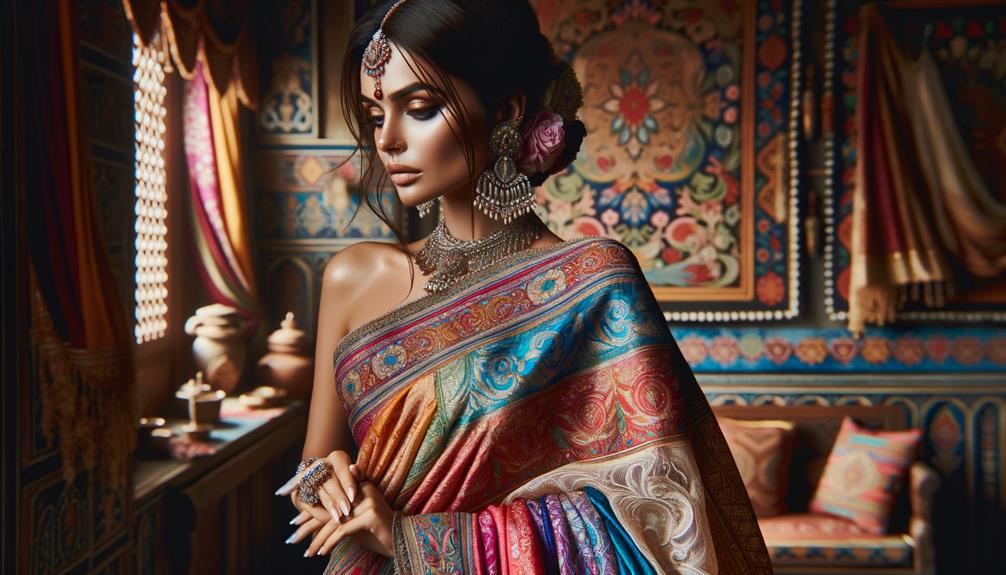
Styling a saree is an art form that allows me to blend tradition with modern flair, creating a look that's both timeless and uniquely personal. When I wear a saree, I love to experiment with different pallu and blouse designs. A striking blouse can transform my saree from simple to stunning, whether it's heavily embroidered or sleek and minimalist.
For a partywear look, statement earrings are a must-have for me. They frame my face and add a touch of sophistication that complements the drape. But what really makes a difference is cinching my saree with a waist belt. This simple addition modernizes the traditional attire and elegantly defines my waistline, giving my outfit a contemporary edge.
Layering is another trick I use. Adding a chic cape or jacket turns my saree ensemble into a sophisticated masterpiece. It's a versatile accessory that can make my look both innovative and elegant. Finally, no saree outfit is complete without a stylish clutch or potli bag. It's that final touch of glamour that makes my draped saree ensemble truly unforgettable.
Occasions to Wear
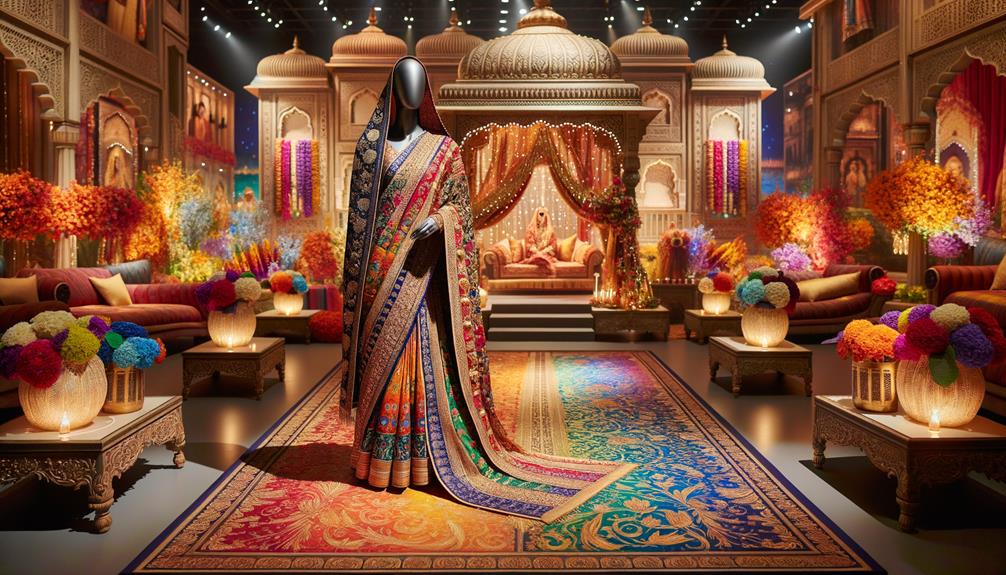
Wearing a saree is more than just a fashion statement; it's about selecting the perfect occasion to showcase its elegance. Whether it's a wedding, cultural event, or intimate gathering, the sari's sophisticated aura makes it a perfect fit. At weddings, I often opt for georgette sarees, which provide comfort and freedom of movement while showcasing intricate designs that reflect Indian flair.
Cultural events and religious ceremonies are ideal settings to don a sari, as it embodies tradition and reverence. Each fold and pleat can be customized, allowing me to express my personal style within the bounds of tradition.
For evening gatherings, I prefer a more opulent sari. The play of light on silk or georgette, combined with ornate designs, creates an unforgettable impression. The sari's versatility makes it a timeless staple in my wardrobe, always ready to make a statement of elegance and innovation, whether it's a daytime celebration or an evening gala.
Frequently Asked Questions
What Is the Drape of a Saree Called?
The drape of a saree is called the 'pallu.' As I carefully arrange it over my shoulder, I feel a deep connection to tradition and heritage. Each fold has a story to tell, blending timeless elegance with a modern touch.
How Much Does Saree Draping Cost in India?
Saree draping costs in India vary widely, and you can expect to pay anywhere from ₹200 for basic draping to ₹1,500 or more for intricate, designer styles, particularly for weddings or festivals.
How to Drape a Fancy Saree?
Draping a fancy saree is an art form; each fold and crease must work together in harmony. I start by tucking the end of the fabric in place, then carefully create pleats that showcase the intricate embroidery and sequins.
How Can I Look Elegant and Classy in Saree?
To look elegant and classy in a saree, I would opt for high-quality fabrics and statement jewelry. Ensuring neat pleats and a defined pallu is crucial. Experimenting with different draping styles helps me find what flatters my unique body type.



